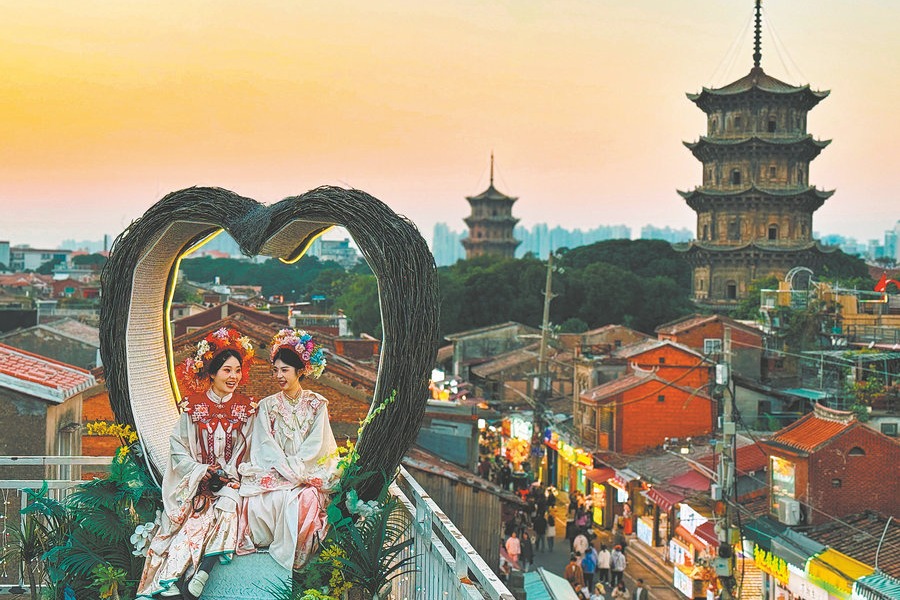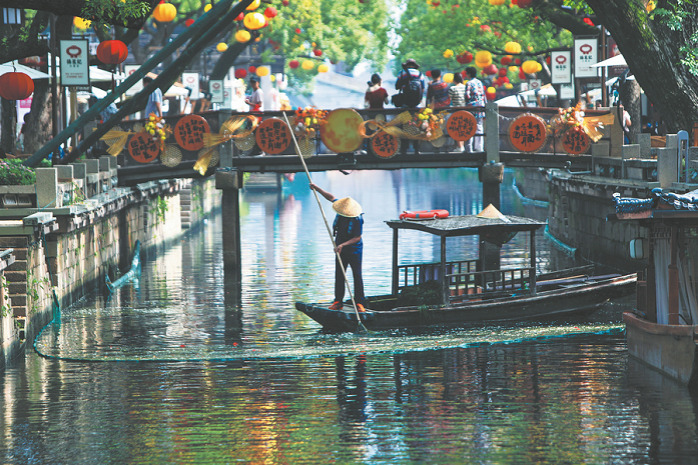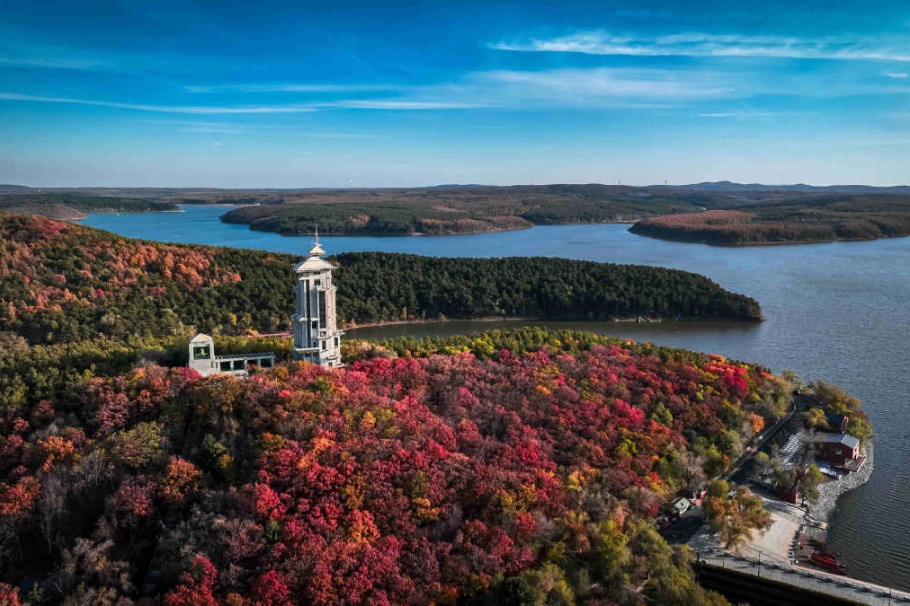Take a trip through time
A rise in historical tourism has helped breathe new life into some of the country's heritage sites, in turn, fueling the rejuvenation of local communities, Yang Feiyue reports.


Rural output and animal husbandry have been scientifically managed, and polluting farms have given way to scenic green belts designed for sightseers and tourists.
Local authorities have focused on the protection, inheritance and use of Grand Canal culture.
Since 2019, archaeological exploration has been carried out along the full 28 km stretch to better understand the canal's conditions.
The county invested more than 1 billion yuan ($157 million) in developing a cluster of 10 cultural facilities in the Grand Canal area, including the Sui-Tang, or the Sui (581-618) and Tang dynasties, canal and a museum of local family traditions, as well as a library and a theater.
The cluster covers an area of 30,000 square meters and provides sightseeing, intangible cultural heritage and performances, as well as social education.
Sixian is also planning a national-level Grand Canal park that will highlight the features of the Sui-Tang Grand Canal sections, as well as archaeological findings, Wang says.
In Lijiang, southwestern China's Yunnan province, the local authority has been trying to instill the bustling commercial areas with a strong cultural presence.
Li Junxing has received local government funding and support in restoring his family's residence, which was built in 1875. So far, the residence has become a museum where visitors can see the distinct features of ethnic Naxi architecture.
In late January, President Xi Jinping emphasized the importance of preserving cultural relics and upholding cultural confidence during his visit to Shanxi province's Pingyao county, which is famed for its well-preserved urban planning and architecture from the Ming (1368-1644) and Qing (1644-1911) dynasties.
The ancient county sits in Jinzhong city, which is half an hour away from the provincial capital of Taiyuan by high-speed train.
Densely clustered ancient buildings, viewed from the top of the Pingyao ancient city wall, can easily take one's breath away.
The intact wall runs for approximately 6 km, and it takes up to two hours to walk the full circle and enjoy a bird's eye view of the old town.

































